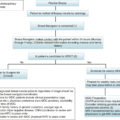Introduction
Given the complexity of the care of patients with breast cancer, outcomes assessment and improvement in the quality of care delivered have become essential. Quality of cancer care may be difficult to define and assess precisely; however, given the variability of morbidity and mortality of patients with breast cancer based on different characteristics, quality metrics become a way to help achieve a standard of care. Ensuring Quality Cancer Care , published by the Institute of Medicine in 1999, was prompted by the variability of quality in cancer care and need for standardizing quality of care and quality monitoring. Since that time, standardized measures have been used by both payers and purchasers of healthcare to ensure that beneficiaries are receiving high-value care, and Medicare payments are tied to reporting of quality metrics and level of performance achieved on quality measures. Moreover, professional organizations and provider groups have established quality measures that capture important processes of care that could be used for pay-for-reporting and other systems, helping with feasibility of system implementation. The aim of these processes includes increasing quality of care, reducing risks, enhancing efficiency, and improving patient satisfaction. Furthermore, creation of quality indicators helps with continuous multidisciplinary improvement and helps assure high-quality outcomes. Implementation of quality indicators is feasible for breast centers to help achieve excellence in breast cancer care. All systems will be required to demonstrate their commitment to quality of care and show demonstrable achievements in care improvement in the upcoming years. Medicare and many other payers are already “bundling” episodes of care, and it is crucial for each hospital system or breast center to be efficient, standardized, and responsible for providing consistent, measurable, and demonstrable quality outcomes.
Framework for Outcomes and Quality Indicators in Breast Cancer Care
Outcomes and quality of care are important in the evaluation of breast cancer care from a patient, provider, and system levels. On all levels, indicators are used to monitor the quality of breast cancer care, make comparisons over time, and support quality improvement for all practitioners and centers involved in the care of these patients. The Center for Medicare and Medicaid Services (CMS), the Commission on Cancer of the American College of Surgeons (CoC), and the National Accreditation Program for Breast Centers (NAPBC) are already requiring these measures and are performing comparisons between regional and national centers during their accreditation processes. The Institute of Medicine has identified six attributes of quality healthcare. These are:
- 1.
Effectiveness: Provide services based on scientific knowledge with success in producing the desired or intended result.
- 2.
Patient-centeredness: Respectful care, responsive to patient needs, clinical and psychosocial.
- 3.
Timeliness: Delivering care without unnecessary delay.
- 4.
Safety: Avoiding harm and ensuring patients are protected from undue danger, risk, or injury.
- 5.
Efficiency: Avoiding waste while achieving the desired clinical result.
- 6.
Equitability: Fair and equal care to all patients.
These attributes are useful in identifying potential quality care initiatives to help quality directors select topics of importance for their patient populations, clinicians, and system leaders. By creating a grid with these attributes, and considering the patient, provider, and system levels as potential focus points, it allows for a framework to enable community cancer program leaders to evaluate their breast cancer quality initiatives. Table 5.1 lists these attributes, along with a sample of potential Breast Cancer Quality Care Initiatives that community cancer program leaders may find useful to investigate within their own programs.
| Quality Attribute | Potential Breast Cancer Care Quality Initiatives |
|---|---|
| Effectiveness |
|
| Patient-centeredness |
|
| Timeliness |
|
| Safety |
|
| Efficiency |
|
| Equitability |
|
Utilizing this framework, community cancer program leaders can initiate improvement measures best suited for their patient community, clinicians, and organization.
System Initiatives and Management of Quality
System initiatives relevant to breast cancer quality can be retrieved from accrediting bodies such as the CoC, the NAPBC, and Quality Oncology Practice Initiative (QOPI). Accreditation provides the framework for delivering high-quality cancer care through specific standards, quality measures, clinical trial accruals/participation, and professional education.
Managing quality initiatives in a large healthcare system can be a challenging task, since best practices and treatment regimens may change at a rapid rate. Furthermore, recruiting physician involvement can be difficult. In a study done by the Journal of Oncology Practice , 97% of oncologists surveyed believed quality improvement was important, but only 49% participated in quality improvement projects in the last 5 years.
Having a strong platform based on multidisciplinary input is crucial in selecting and implementing quality measures. Recruiting champions in multidisciplinary roles is one of the first steps in establishing a robust quality review program. Just like building a house, the foundation is one of the most important aspects of building a successful breast quality program, since these multidisciplinary champions are vital to the success of the program. Developing a systematic, explicit method of prioritizing a set of measures based on how well they identify high-priority targets for quality improvement could offer significant advantages. Fig. 5.1 provides an example of a vertical cancer quality program structure that we use within our healthcare system. A breakdown of the breast quality council is displayed below. This model is then duplicated across all disease sites listed.











